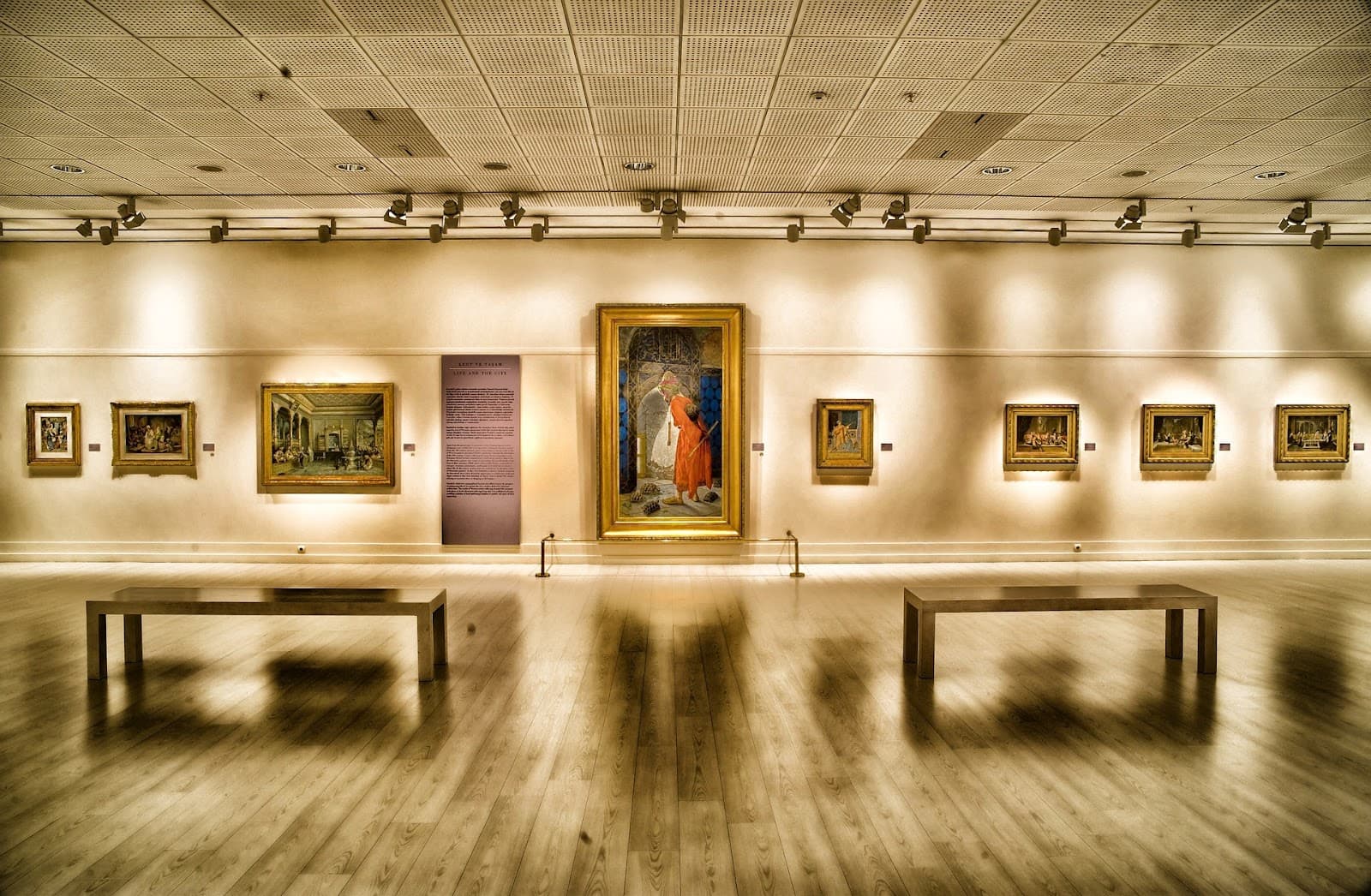Introduction
Step into a world where the excitement of casino gaming meets the allure of fine art – all from the comfort of your own home. Virtual exhibits are revolutionizing the way we experience both online casinos and digital art galleries, creating a fascinating intersection of entertainment and culture. As technology continues to advance at breakneck speed, these digital platforms are pushing the boundaries of what’s possible, offering users immersive experiences that were once confined to the realm of science fiction. But what’s driving this trend, and how is it reshaping our online experiences?
The Rise of Virtual Exhibits
The Evolution of Online Casinos
Remember the days when online casinos were nothing more than basic slot machines and poker tables on a screen? Those times are long gone. The online casino industry has undergone a remarkable transformation, evolving from simple digital representations of traditional games to complex, immersive virtual environments. This evolution has been fueled by a perfect storm of technological advancements, changing consumer preferences, and the ever-present desire for the next big thing in entertainment.
Today’s online casinos are a far cry from their predecessors. They’ve embraced cutting-edge technology to create experiences that rival, and in some cases surpass, their brick-and-mortar counterparts. From live dealer games that stream real-time action directly to your device, to virtual reality poker rooms where you can interact with other players as if you were sitting at the same table, the best online casino to win money now offers an experience that’s as much about the atmosphere and social interaction as it is about the games themselves.
The Emergence of Digital Art Galleries
While online casinos were upping their game, another digital revolution was taking place in the art world. Digital art galleries have burst onto the scene, democratizing access to art in ways previously unimaginable. No longer confined by physical space or geographical location, these virtual galleries have opened up a world of artistic expression to a global audience.
Imagine being able to stroll through a meticulously curated exhibition of contemporary art from your living room, or examine a Renaissance masterpiece in stunning detail without having to book a flight to Florence. Digital art galleries make this possible, and they’re not just showcasing traditional art forms. They’ve become a platform for digital artists to push the boundaries of creativity, showcasing interactive installations, AI-generated artworks, and immersive 3D sculptures that simply couldn’t exist in the physical world.
Creating Immersive User Experiences
Technology Behind Virtual Exhibits
So, what’s the secret sauce behind these mind-blowing virtual exhibits? It’s a cocktail of cutting-edge technologies that work together to transport users into another world. At the forefront is Virtual Reality (VR), which uses headsets to immerse users in a completely digital environment. Picture yourself walking through a virtual casino, the sounds of slot machines and excited chatter surrounding you, or standing in front of a digital artwork so lifelike you feel you could reach out and touch it.
But VR isn’t the only player in town. Augmented Reality (AR) is making waves by overlaying digital elements onto the real world through your smartphone or tablet. Imagine pointing your device at a blank wall and seeing it transform into a vibrant art gallery, or having a virtual poker table appear on your kitchen counter.
And let’s not forget about the role of high-definition graphics and 3D modeling. These technologies have come so far that virtual environments can now be rendered in stunning detail, creating spaces that are not just believable, but breathtakingly beautiful.
Interactive Features
What really sets virtual exhibits apart, though, is their interactivity. In the world of online casinos, this might mean live dealers who interact with you in real-time, creating a social experience that mirrors the atmosphere of a physical casino. Some of the top UAE casino sites have taken this even further, offering virtual reality poker rooms where you can see and interact with other players’ avatars, read their body language, and even engage in friendly banter.

Digital art galleries, on the other hand, are pushing the boundaries of what it means to experience art. Imagine being able to step inside a painting, manipulating elements of the artwork to create your own unique experience. Or picture an interactive sculpture that responds to your movements, changing shape and color as you move around it. These aren’t just passive experiences – they’re invitations to become part of the art itself.
User Engagement Strategies
But creating an immersive environment is only half the battle. To keep users coming back, virtual exhibits need to employ clever engagement strategies. For online casinos, this often takes the form of loyalty programs that reward frequent players with exclusive bonuses or access to VIP virtual rooms. They might also offer personalized game recommendations based on your playing history, ensuring that you’re always discovering new experiences that align with your interests.
Digital art galleries, meanwhile, are exploring ways to make art more social. Some platforms allow users to create their own virtual exhibitions, curating collections from different artists and sharing them with friends. Others are experimenting with timed exhibitions that create a sense of urgency and exclusivity, encouraging users to log in regularly to see what’s new.
Benefits of Virtual Exhibits
Accessibility and Convenience
One of the most significant advantages of virtual exhibits is their unparalleled accessibility. Gone are the days when enjoying a world-class casino or viewing renowned artworks required a plane ticket and a hefty travel budget. With virtual exhibits, these experiences are quite literally at your fingertips, available 24/7 from anywhere with an internet connection.
This accessibility extends beyond just convenience. For people with mobility issues or those living in remote areas, virtual exhibits open up a world of experiences that might otherwise be out of reach. It’s a great equalizer, allowing anyone with a smartphone or computer to explore, learn, and be entertained.
Moreover, the convenience factor can’t be overstated. Fancy a quick game of blackjack at 3 AM? No problem. Want to spend your lunch break exploring a new art exhibition? Go right ahead. Virtual exhibits fit into your schedule, not the other way around.
Enhanced User Experience
But accessibility isn’t the only advantage – virtual exhibits often provide a superior experience in many ways. Take online casinos, for instance. While physical casinos are limited by space and resources, virtual casinos can offer an almost infinite variety of games. They can also provide detailed tutorials and practice modes, allowing newcomers to learn the ropes without the pressure of real money or judging eyes.
In the art world, virtual galleries offer opportunities that would be impossible in physical spaces. Zoom functions allow you to examine artworks in minute detail, perhaps even more closely than you could in real life. Virtual tours can provide context and commentary, enhancing your understanding and appreciation of the art. And let’s not forget the potential for personalization – imagine an AI curator that learns your tastes and creates custom exhibitions just for you.
Challenges and Future Trends
Technological and Operational Challenges
Of course, it’s not all smooth sailing in the world of virtual exhibits. Technical challenges abound, from ensuring stable connections for live casino games to managing the massive amounts of data required for high-definition virtual art galleries. There’s also the ever-present challenge of cybersecurity, particularly crucial for online casinos handling financial transactions.
Another significant hurdle is the need for continuous innovation. In a field driven by novelty and cutting-edge experiences, standing still is equivalent to moving backward. Both online casinos and digital art galleries need to constantly push the envelope, which requires significant ongoing investment in research and development.
There’s also the question of user adoption. While younger, tech-savvy users might readily embrace these new platforms, there’s still a significant portion of the population that prefers traditional experiences. Bridging this gap and making virtual exhibits accessible and appealing to all demographics remains a challenge.
Future Trends in Virtual Exhibits
So, what does the future hold for virtual exhibits? If current trends are any indication, we’re in for some exciting developments. One area to watch is the integration of AI and machine learning. Imagine an online casino that can predict your preferences and adjust its virtual environment in real-time to enhance your experience. Or picture a digital art gallery that uses AI to generate unique artworks based on your emotional responses.
We’re also likely to see further blurring of the lines between different types of virtual experiences. Perhaps in the future, you’ll be able to step from a virtual casino directly into an art gallery, or play a poker game surrounded by priceless virtual artworks. The possibilities are limited only by imagination and technology.
Another exciting prospect is the potential for increased social interaction in virtual spaces. As technology improves, we might see virtual exhibits become more like social platforms, where users can meet, interact, and share experiences in rich, immersive environments.
Conclusion
Virtual exhibits represent a fascinating convergence of technology, entertainment, and art. They’re redefining what’s possible in both online casinos and digital art galleries, creating experiences that are more accessible, engaging, and immersive than ever before. While challenges remain, the potential for growth and innovation in this space is enormous.
